How Patek Philippe revived the dome clock: enamelling goes outré
These enamelled dome clocks are part of a London exhibition highlighting Patek Philippe's dedication to keeping rare craft techniques alive

Over a century in business has seen Patek Philippe create a handful of era-defying watch designs, variations of which are commonly seen on the wrists of aficionados such as Jay-Z, Drake and Victoria Beckham. The watchmaker, one of a handful of independently owned Swiss watch names, is rarely singled out as a design-led house, however. Showiness is not its nature, yet Patek Philippe boasts an avant-garde side that's well worth exploring. Its singular, decorated clock designs are a case in point. This week (7-16 June), at the ‘Patek Philippe Rare Handcrafts 2024’ exhibition in London, its magnificently outré and highly collectable enamelled dome clocks take centre stage. Here's what we saw.
Patek Philippe’s enamelled dome clocks
The Paris 1924 Olympics Dome
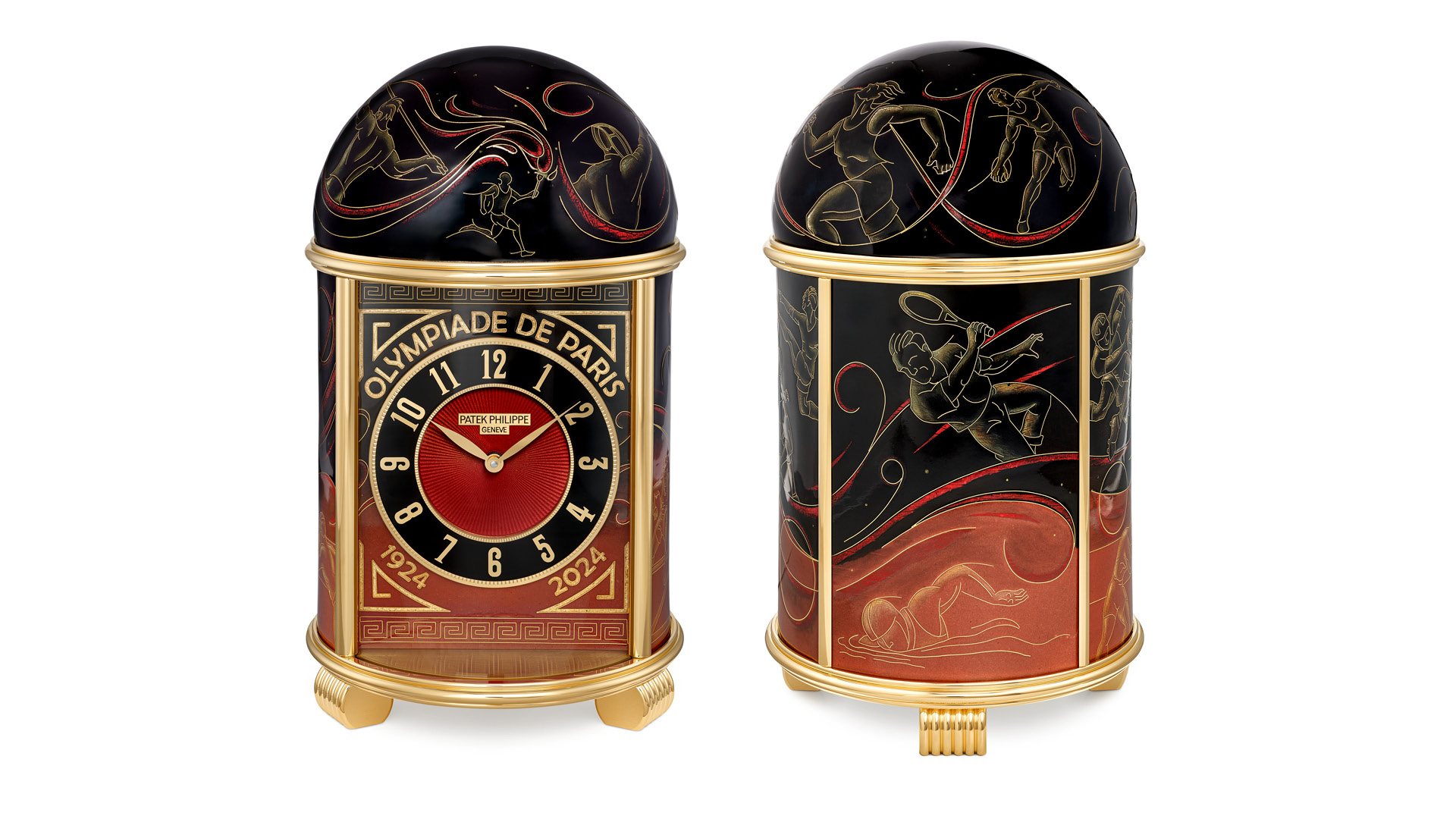
Celebrating the Paris 1924 Olympics
Often known as anniversary clocks, dome clocks, whose forms were inspired by classic celestial observatories, were old-fashioned even when they were still being produced in the mid-1960s. But spotting their potential as a canvas for the disappearing enameller's art, Philippe Stern, father of current Patek Philippe CEO Thierry, decided to buy up abandoned stocks in the 1980s. Today, Patek Philippe dome clocks are highly sought-after collectors' pieces. Here, the Paris Olympics centenary clock, inspired by original poster illustrations, is brought to life in a series of enamelling methods, including grand feu cloisonné, paillonné and miniature painting (see our technique guide below). The athlete silhouettes are moulded in gold wire measuring 0.19 x 0.78 mm wide, while the Olympic Flame is illustrated in five shades of red enamel. The event dates are highlighted in silver paillons (tiny pieces of silver leaf) beneath the enamel. Twelve firings at 750°C were required to perfect the varied depth of tones throughout.
The Miami Beach Dome
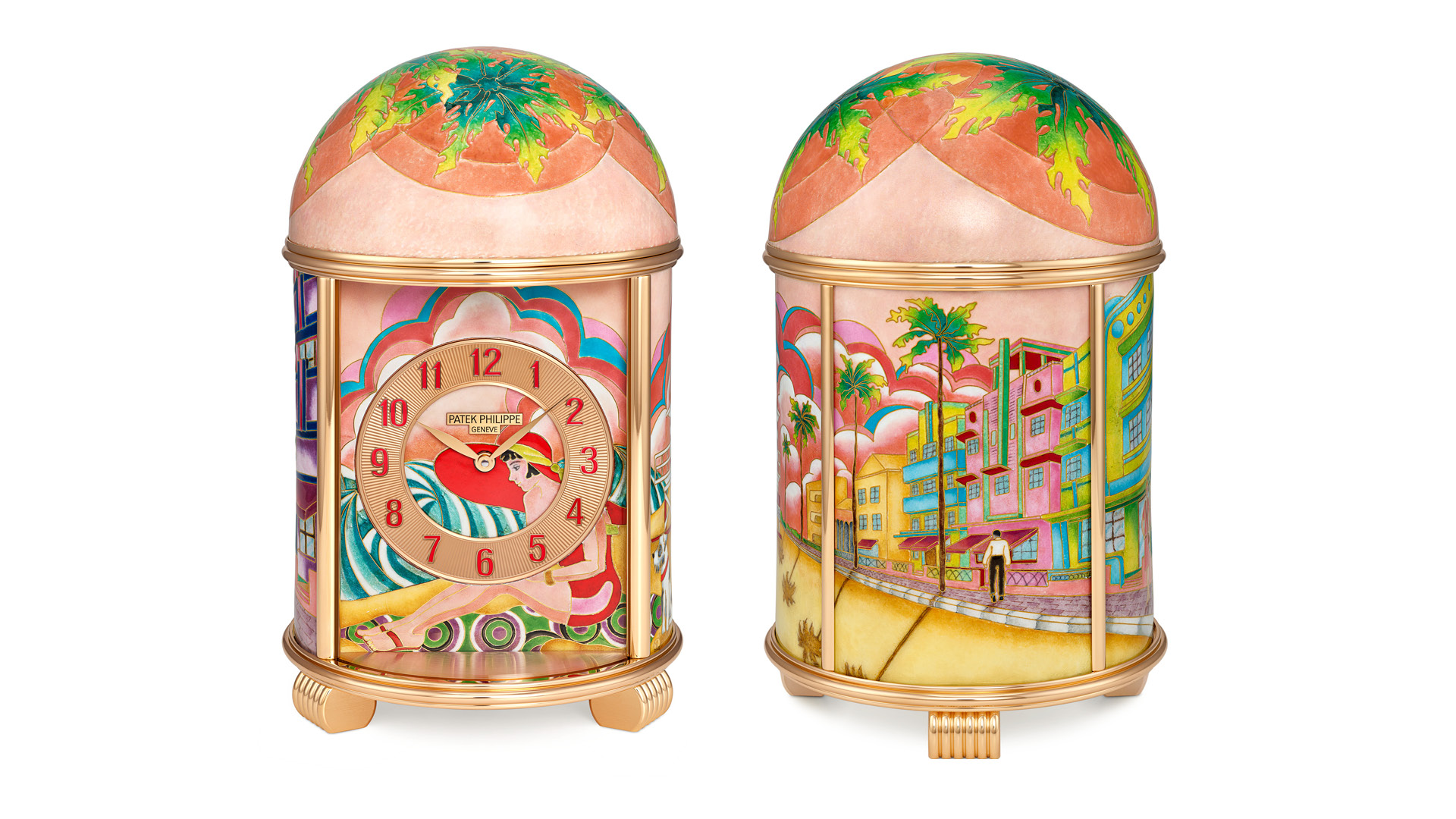
Celebrating Miami's art deco heritage
Whatever the subject, and whatever your taste, the mix of high tradition, rare craftsmanship and sweeping, architectural subjects that combine to create a Patek Philippe dome clock gives them a museum quality all their own. The Miami Beach clock is a fine example. From tangy pinks and oranges to palm greens and ocean blues, the sublime palette of 39 translucent, opaque and opalescent shades created as an expression of the city's art deco heritage requires an alchemist's way with colour. The building profiles and serrated palm tree leaves were shaped using 11.37m of gold wire just 0.2 x 0.6 mm wide. Details are highlighted in a single colour enamel by way of miniature painting techniques. Each enamelled plate required up to 12 firings at around 890°C to 910°C.
The Tiki Dome
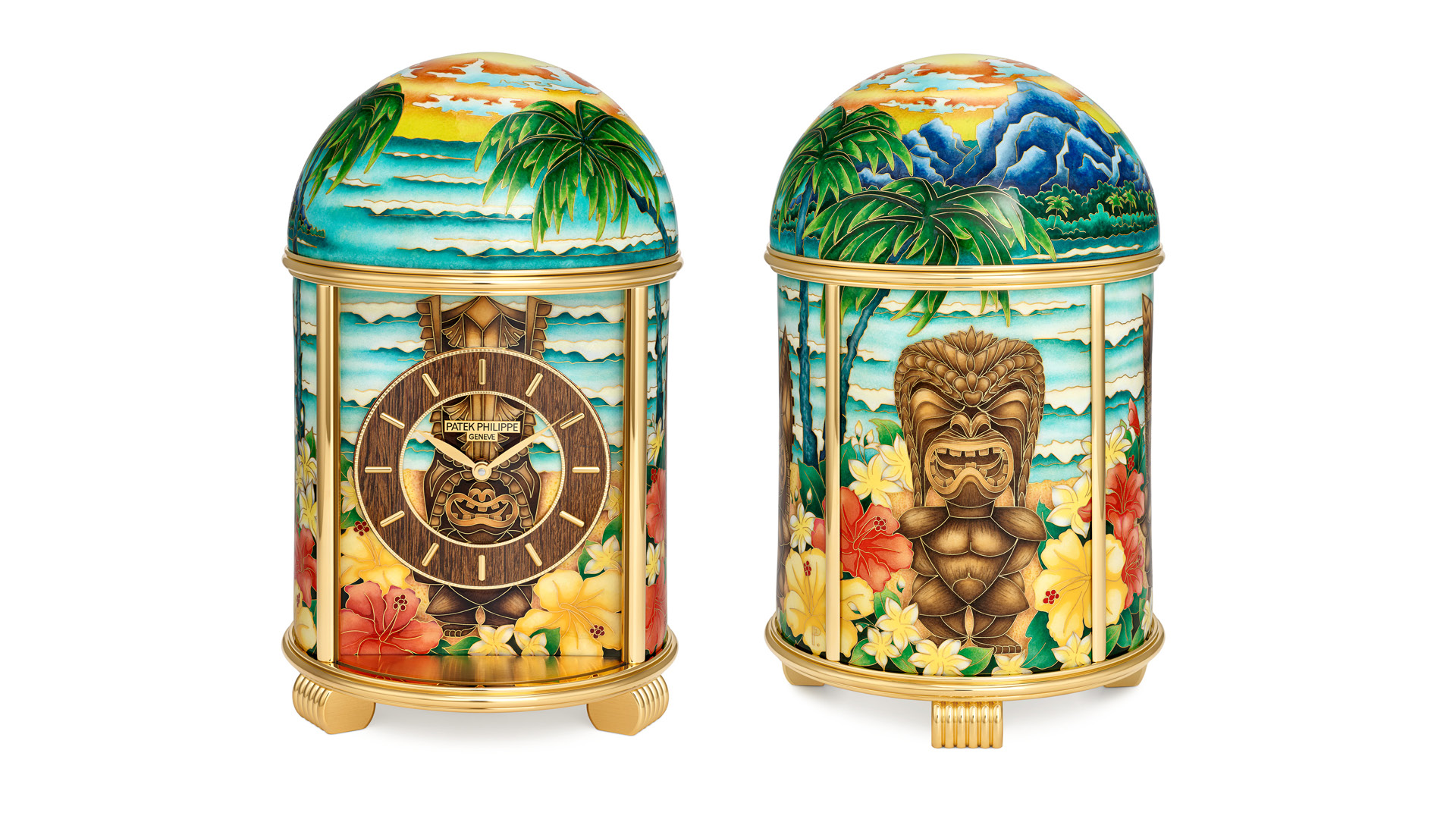
Celebrating Polynesian culture
‘My father is passionate about rare crafts,’ Thierry Stern says. ‘He has a collection of enamelled pieces that he'd occasionally let me look at when I was young but that I wasn’t allowed to touch, so I was always fascinated by them.’ This Polynesian scene, created in the grand feu cloisonné enamel style, required 28.55m of gold wire, measuring 0.2 x 0.6mm wide to create the scene outlines. The enameller worked with 64 colours, of which 44 were translucent, 14 opalescent and six opaque. Deft touches of miniature painting highlight finer details. Each enamelled plate required 11 firings at 920°C.
The American Locomotive Dome
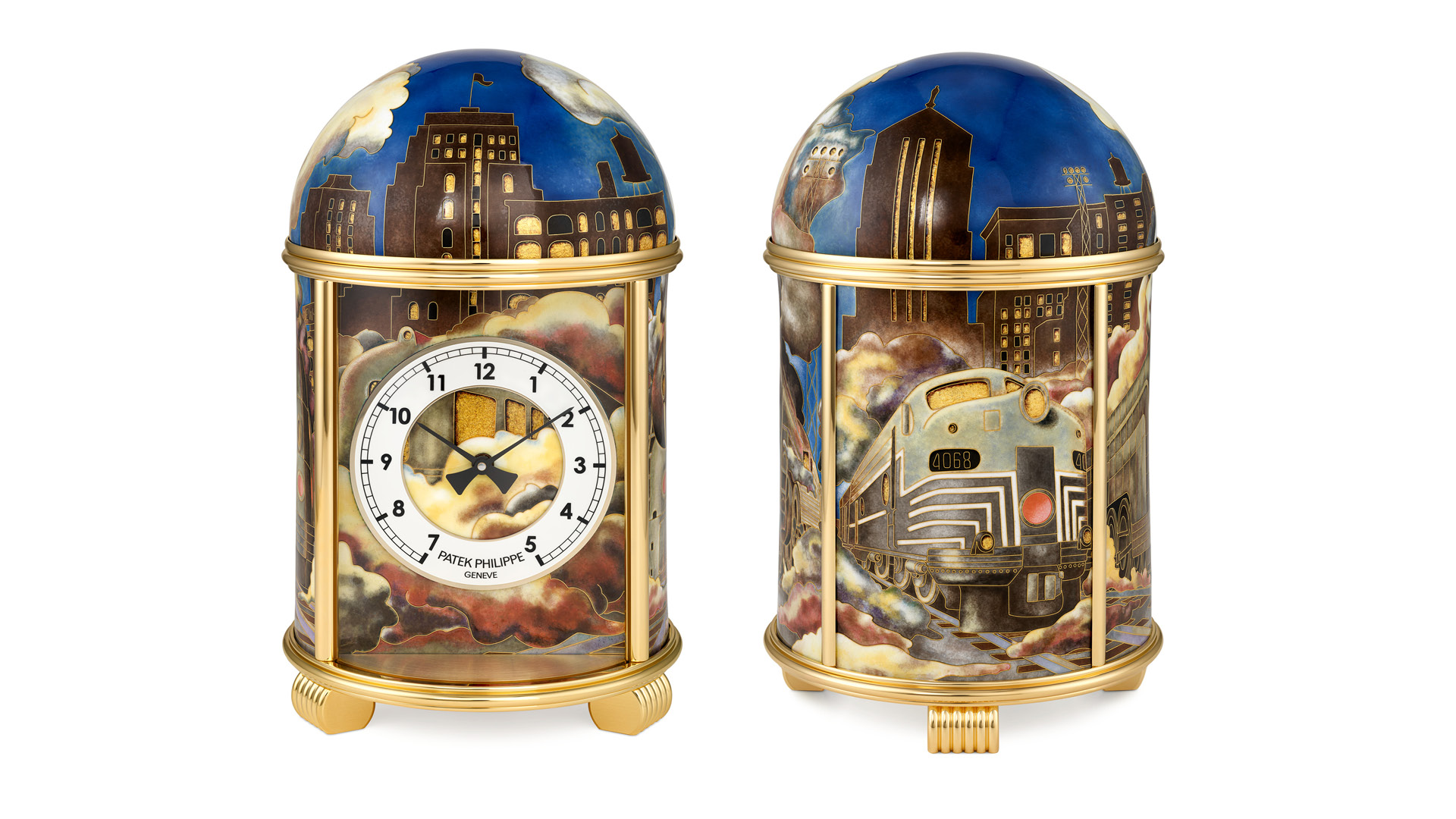
Celebrating early 20th-century American train design
Philippe Stern saw a way to bring new stories to life through artisanal crafts. The American locomotive homage took 16.52m of gold wire at 0.19 x 0.78mm wide to outline three trains whizzing past New York skyscrapers by night. A palette of 31 enamel colours, mainly translucent but some semi-translucent or opaque, was achieved, with miniature painting on enamel in 11 colours, highlighting fine details. Silver paillons embedded beneath the translucent enamel illuminate the windows, creating a sense of depth. Each enamelled plate required an average of 14 firings at a temperature of 750°C.
Enamelling: a brief guide
- Cloisonné A method where artistic outlines are hand-moulded in supremely fine wire, usually gold, which is fixed to a base plate coated with a ground layer of enamel. After the first firing, the spaces between the wire partitions are filled with enamel paint and fired many times to fine-tune the desired colour effect, from transparency to intensity.
- Champlevé Here, a metal base is engraved, and the engraved markings filled with enamel; it’s a method suited to series production or simple decoration on a flat surface. Intricate designs, however, require handwork in the cloisonné style.
- Paillonné enamelling involves cutting tiny pieces of gold or silver leaf into a pattern, like sequins, and embedding them in layers of transparent enamel.
- Miniature painting A technique that few people master, miniature painting is a highly specialised art in its own right. Here, enamel is mixed with oil rather than water. It is then applied with a very fine brush on a ground layer of enamel, allowing for naturally expressive portraits, landscapes, and crowd scenes.
For more information, visit the Patek Philippe Rare Handcrafts exhibition website
Wallpaper* Newsletter
Receive our daily digest of inspiration, escapism and design stories from around the world direct to your inbox.
Caragh McKay is a contributing editor at Wallpaper* and was watches & jewellery director at the magazine between 2011 and 2019. Caragh’s current remit is cross-cultural and her recent stories include the curious tale of how Muhammad Ali met his poetic match in Robert Burns and how a Martin Scorsese Martin film revived a forgotten Osage art.
-
 Put these emerging artists on your radar
Put these emerging artists on your radarThis crop of six new talents is poised to shake up the art world. Get to know them now
By Tianna Williams
-
 Dining at Pyrá feels like a Mediterranean kiss on both cheeks
Dining at Pyrá feels like a Mediterranean kiss on both cheeksDesigned by House of Dré, this Lonsdale Road addition dishes up an enticing fusion of Greek and Spanish cooking
By Sofia de la Cruz
-
 Creased, crumpled: S/S 2025 menswear is about clothes that have ‘lived a life’
Creased, crumpled: S/S 2025 menswear is about clothes that have ‘lived a life’The S/S 2025 menswear collections see designers embrace the creased and the crumpled, conjuring a mood of laidback languor that ran through the season – captured here by photographer Steve Harnacke and stylist Nicola Neri for Wallpaper*
By Jack Moss
-
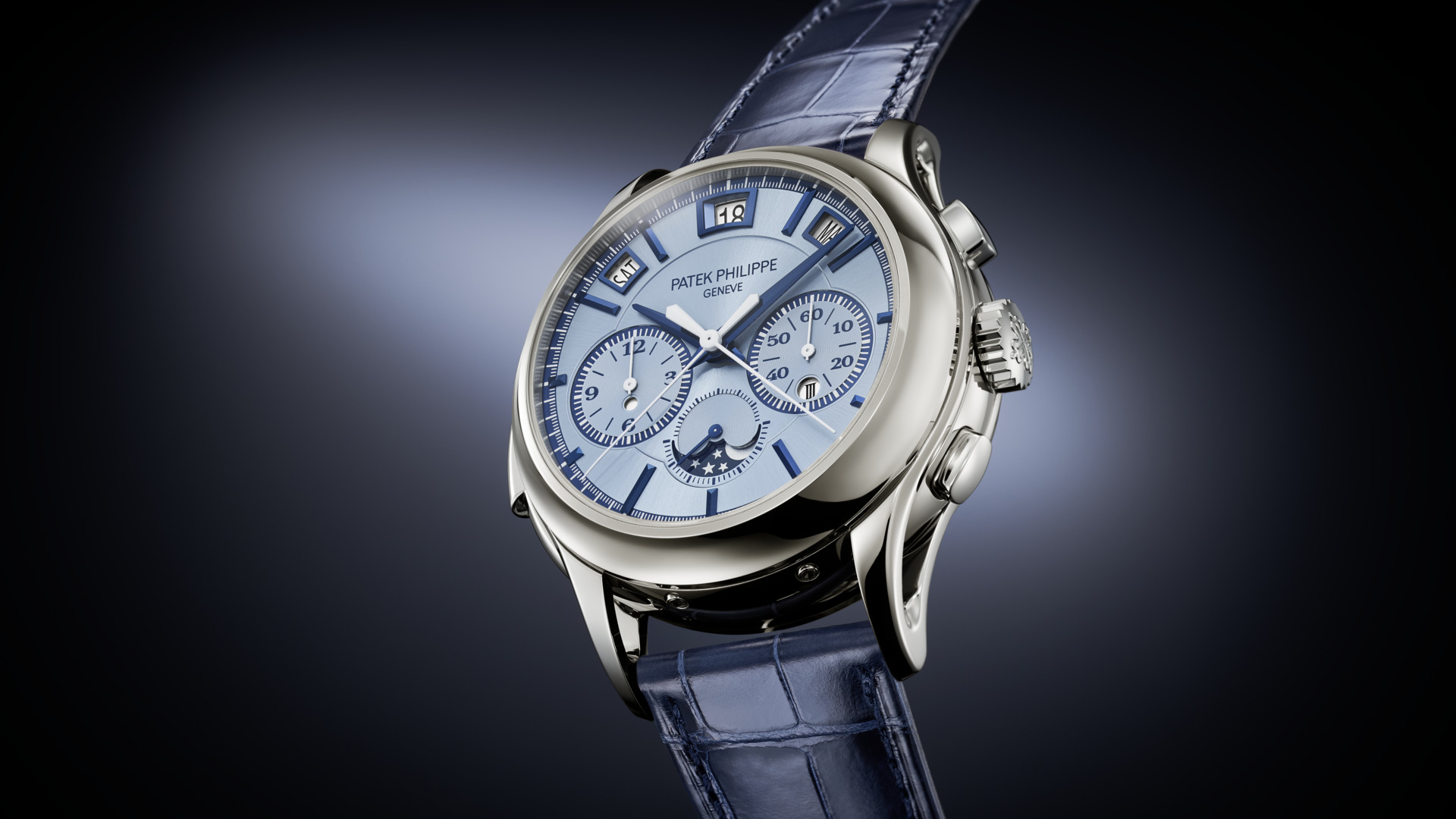 Patek Philippe brings 15 new timepieces to Watches and Wonders 2025
Patek Philippe brings 15 new timepieces to Watches and Wonders 2025The Swiss manufacturer showcases its intricate complications and elegant designs at the annual trade show with a suite of new models
By Anna Solomon
-
 Pantone’s colour of the year on your wrist: discover watches in mocha mousse
Pantone’s colour of the year on your wrist: discover watches in mocha moussePantone’s mocha mousse is the colour of the year. Here are ten watches in the delectable rich chocolate tone
By Thor Svaboe
-
 Wallpaper* Design Awards 2025: best watch reinterpretations
Wallpaper* Design Awards 2025: best watch reinterpretationsWatch brands including Casio, G-Shock and Audemars Piguet are going full circle – and we’re here for it
By Hannah Silver
-
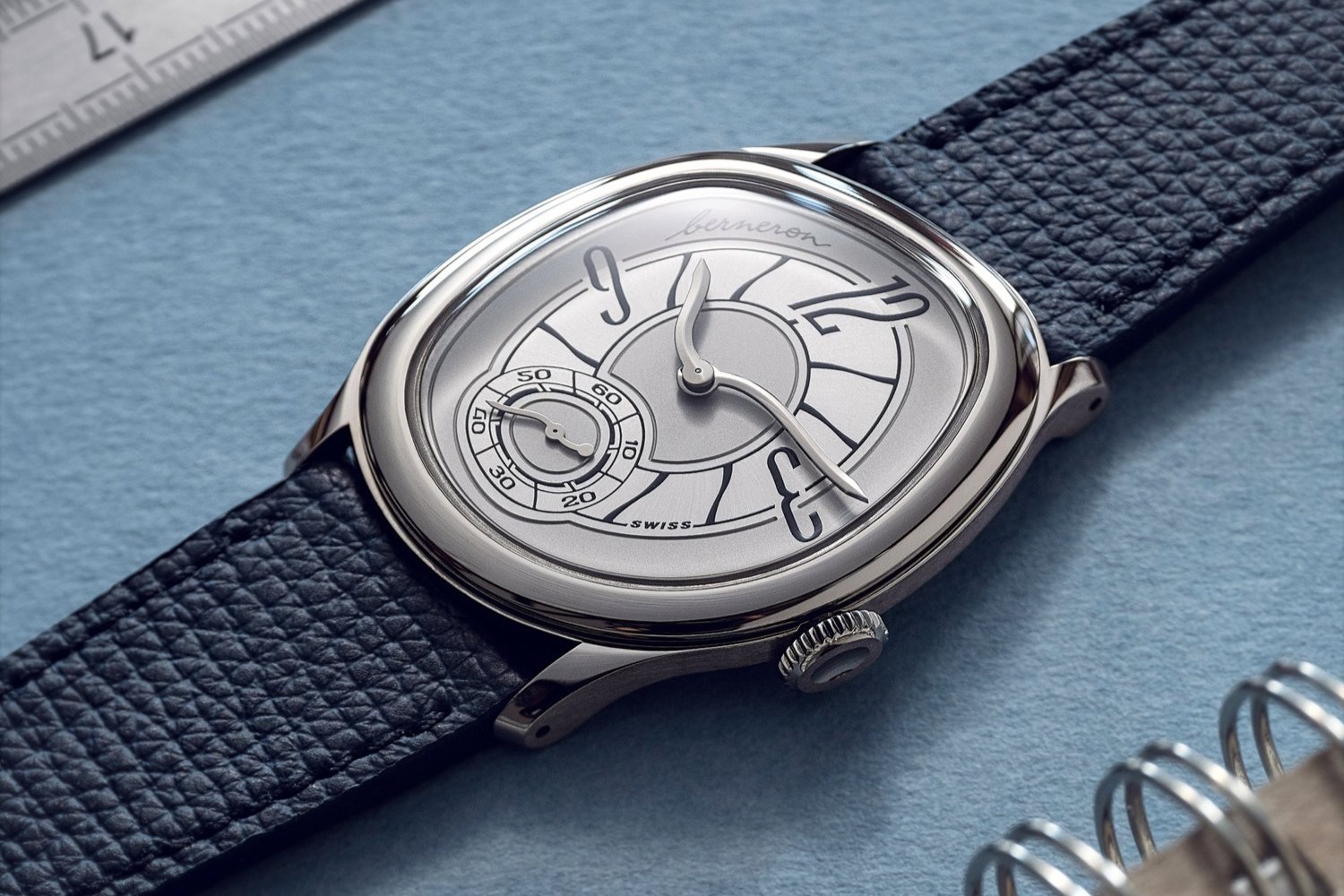 The rise and rise of odd-shaped watches
The rise and rise of odd-shaped watchesAsymmetrical, triangular, oval – a host of watch brands are experimenting with unexpected dial shapes. Here are some of the best
By Thor Svaboe
-
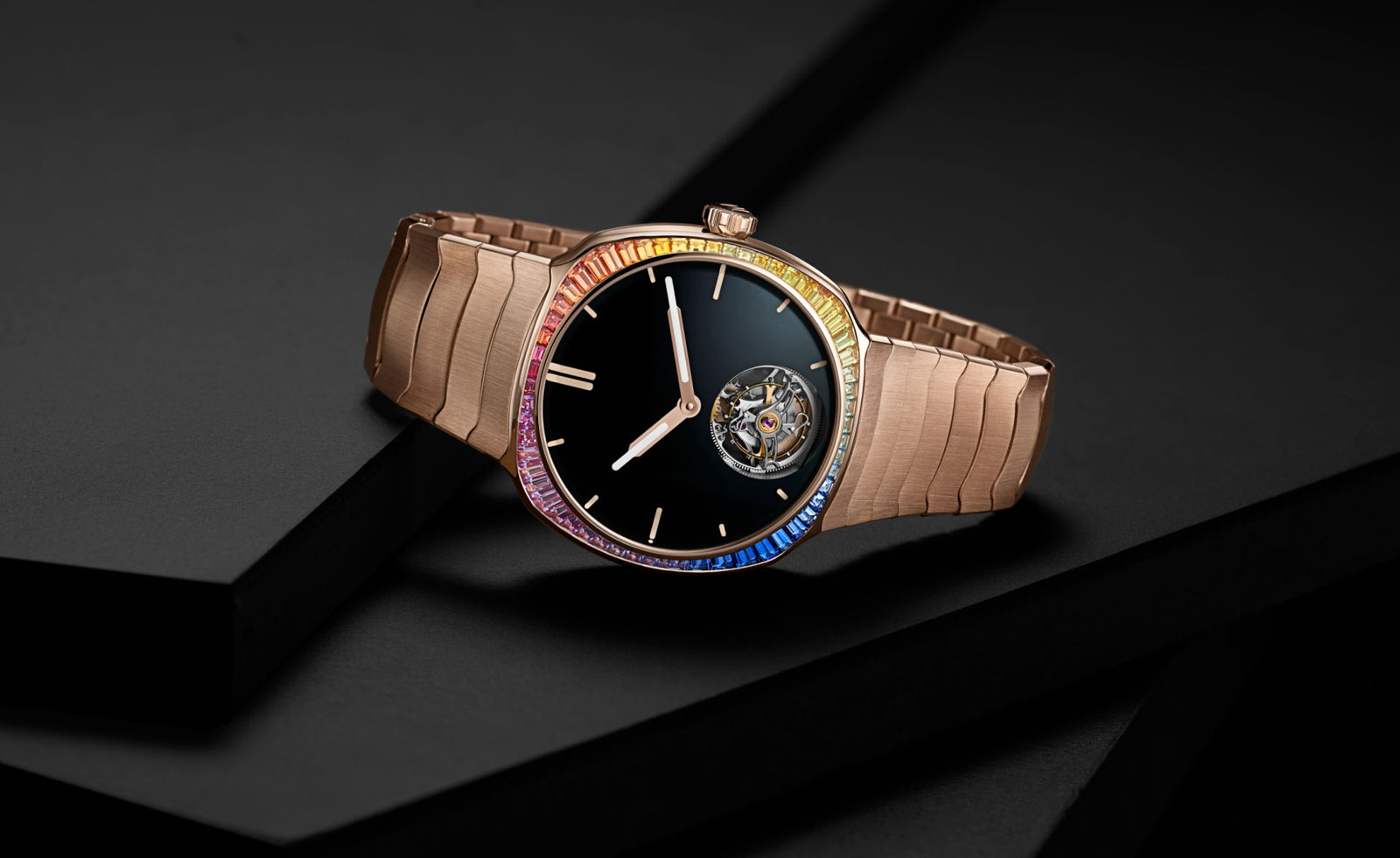 Gold watches for 2025 and beyond
Gold watches for 2025 and beyondGold watches from H Moser & Cie, Fears and Patek Philippe are on our radar for 2025
By Josh Sims
-
 Striking watches look on the bright side this season with an injection of colour
Striking watches look on the bright side this season with an injection of colourBold hues rule in this season’s new colourful watches
By Hannah Silver
-
 Patek Philippe’s Watches and Wonders 2023 releases embody a sharp technicality
Patek Philippe’s Watches and Wonders 2023 releases embody a sharp technicalityDiscover the new watches from Patek Philippe
By Hannah Silver
-
 Watches, jewellery and art go under the hammer at Phillips Asia
Watches, jewellery and art go under the hammer at Phillips AsiaDigital ‘Refresh: Reload’ auction unites disciplines for the first time
By Hannah Silver